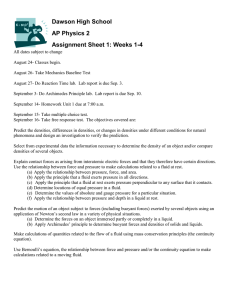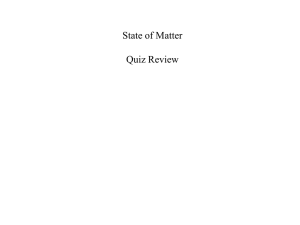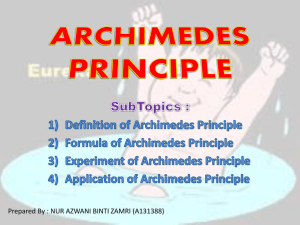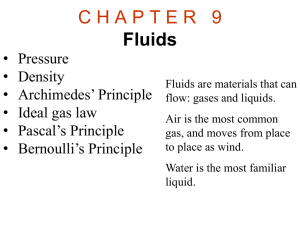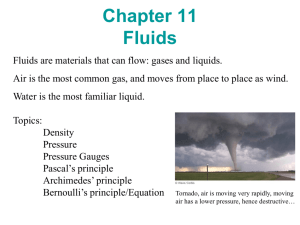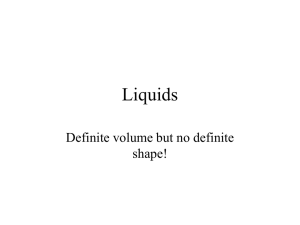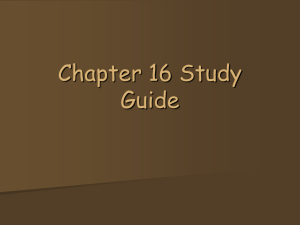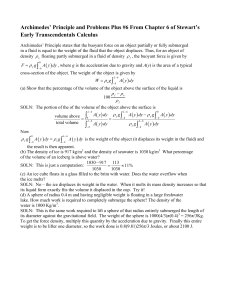CP ch 19-20 Study guide - 2013 spr
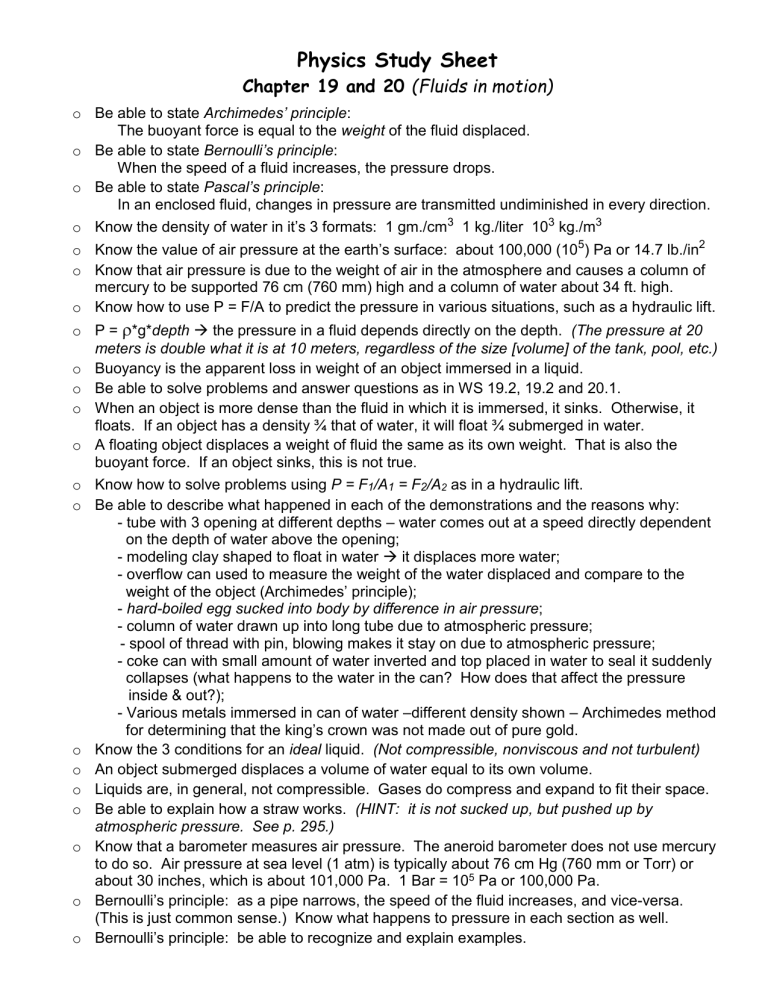
Physics Study Sheet
Chapter 19 and 20 (Fluids in motion)
o Be able to state
Archimedes’ principle
:
The buoyant force is equal to the weight of the fluid displaced. o Be able to state Bernoulli
’s principle
:
When the speed of a fluid increases, the pressure drops. o Be able to state Pascal’s principle :
In an enclosed fluid, changes in pressure are transmitted undiminished in every direction. o Know the density of water in it’s 3 formats: 1 gm./cm 3
1 kg./liter 10
3
kg./m
3 o Know the value of air pressure at the ea rth’s surface: about 100,000 (10 5
) Pa or 14.7 lb./in
2 o Know that air pressure is due to the weight of air in the atmosphere and causes a column of mercury to be supported 76 cm (760 mm) high and a column of water about 34 ft. high. o Know how to use P = F/A to predict the pressure in various situations, such as a hydraulic lift. o P =
*g* depth
the pressure in a fluid depends directly on the depth. (The pressure at 20 meters is double what it is at 10 meters, regardless of the size [volume] of the tank, pool, etc.) o Buoyancy is the apparent loss in weight of an object immersed in a liquid. o Be able to solve problems and answer questions as in WS 19.2, 19.2 and 20.1. o When an object is more dense than the fluid in which it is immersed, it sinks. Otherwise, it floats. If an object has a density ¾ that of water, it will float ¾ submerged in water. o A floating object displaces a weight of fluid the same as its own weight. That is also the buoyant force. If an object sinks, this is not true. o Know how to solve problems using P = F
1
/A
1
= F
2
/A
2
as in a hydraulic lift. o Be able to describe what happened in each of the demonstrations and the reasons why:
- tube with 3 opening at different depths – water comes out at a speed directly dependent
on the depth of water above the opening;
- modeling clay shaped to float in water it displaces more water;
- overflow can used to measure the weight of the water displaced and compare to the weight of the object (Archimedes’ principle);
- hard-boiled egg sucked into body by difference in air pressure ;
- column of water drawn up into long tube due to atmospheric pressure;
- spool of thread with pin, blowing makes it stay on due to atmospheric pressure;
- coke can with small amount of water inverted and top placed in water to seal it suddenly
collapses (what happens to the water in the can? How does that affect the pressure
inside & out?);
- Various metals immersed in can of water
–different density shown – Archimedes method
for determ ining that the king’s crown was not made out of pure gold. o Know the 3 conditions for an ideal liquid. (Not compressible, nonviscous and not turbulent) o An object submerged displaces a volume of water equal to its own volume. o Liquids are, in general, not compressible. Gases do compress and expand to fit their space. o Be able to explain how a straw works. (HINT: it is not sucked up, but pushed up by atmospheric pressure. See p. 295.) o Know that a barometer measures air pressure. The aneroid barometer does not use mercury to do so. Air pressure at sea level (1 atm) is typically about 76 cm Hg (760 mm or Torr) or about 30 inches, which is about 101,000 Pa. 1 Bar = 10 5 Pa or 100,000 Pa. o Bernoulli’s principle: as a pipe narrows, the speed of the fluid increases, and vice-versa.
(This is just common sense.) Know what happens to pressure in each section as well. o Bernoulli’s principle: be able to recognize and explain examples.
ρ
o
ρ
F
Be a
F ble to solve problems using Pascal’s’ Formula:
A
1
=
F
A
2
2
F g
=
F
B


